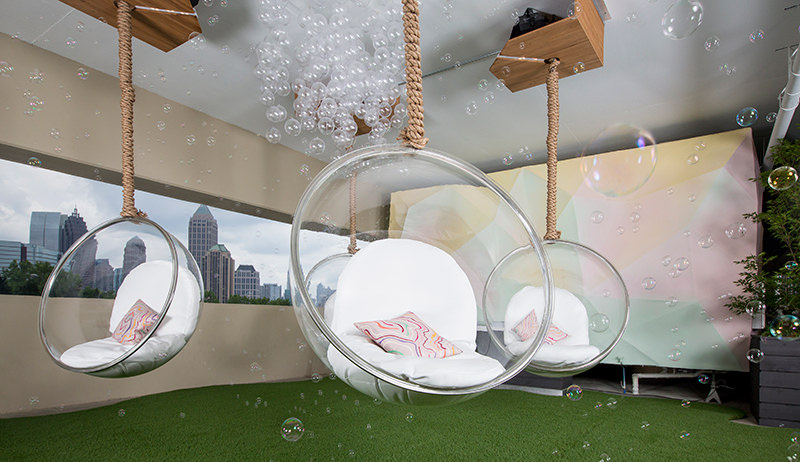
How can design change the world? The answer came to life with SCADpad—a community of 135-square-foot homes in a downtown Atlanta fourth-floor parking structure. The unprecedented micro-housing project arose from a team at Savannah College of Art and Design’s Atlanta location, who are working to solve ever-growing urban housing challenges. Excess parking coupled with rapidly growing urban populations was the inspiration behind this idea.
“There are more than 105 million parking spaces in the U.S. alone,” says Christian Sottile, dean of the School of Building Arts. “Many of those (parking spaces) are vacant half the time.”
Initial development included 75 SCAD students, 37 alumni and 12 faculty members across 12 academic degree programs. “SCADpad was designed to be a living laboratory for millennial minds to help them envision how we’ll engage with an urban environment in the future,” Sottile says.
The pads seek to serve a global housing crisis, but they also celebrate a global world through art and design. For example one of the pads is Asian-inspired while another is North American-themed.
As part of the original project, students and special guests tested the livability of SCADpad for 90 days.
“Living does not feel cramped because your daily rhythms incorporate a constant inside/outside movement that you don’t really even notice,” Glennis Lofland, a graduate student and SCADpad resident notes. “You make breakfast inside, but step just behind you to eat on the porch next to the marigolds while checking email.”
A writer, she detailed her experience living at SCADpad in her blog.
“Each pad has one of these porches: decks surrounded by potted plants and trees,” she wrote. “But living at SCADpad is green in more ways than sitting in urban gardens. The community garden has mostly vegetable plants, herbs and edible leafy greens. When ordering groceries for a specific recipe through the SCADpad iPad, the app is designed to make use of the garden, ordering only what cannot be found there. Each SCADpad has its own planters, as well—it’s possible to just lean out the door while cooking and snip a few fresh herbs.”
The SCADpad currently does not have any occupants because it’s undergoing modifications from feedback provided by students like Lofland.
“SCADpad is an evolving living laboratory for urban living,” Sottile says. “[For example,] the interior of SCADpad Asia has been transformed into a live/work environment.”
And that’s something that the students involved in the project completely get. Our ever-growing world is going to require constant awareness and change in how we approach day-to-day living. And these soon-to-be professional designers can play a role in that.
“We are choosing bikes and public transportation over cars, studio spaces over mortgages, collaboration over isolation, and cities over country sides,” Eny Lee Park, an award-winning design student and participant in the SCADpad project says. “To be a designer is to be cognizant of changes in the world and to adapt accordingly.”
To learn more about the project and tour the pads, visit the SCADpad website.





